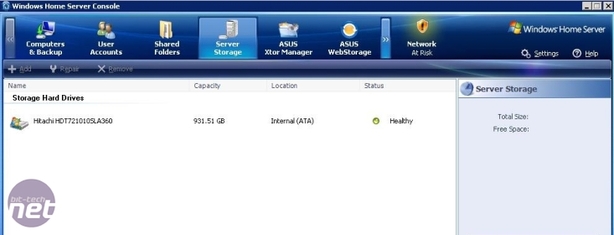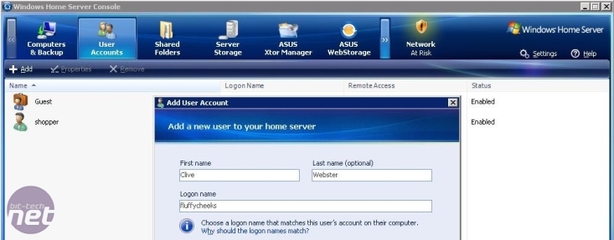
What is Windows Home Server?
Most households now have multiple computers and huge libraries of media files too; it's therefore no longer a daft idea to have a server in your home to store all those files in a centralised place. Network Attached Storage (NAS) devices are essentially small servers designed for use in the home, but generally use modified versions of Linux. It was only a matter of time before Microsoft got in on the action with Windows Home Server (WHS), which it introduced in 2007.Most NAS devices run Linux on hardware based around embedded processors from manufacturers such as Marvell or Freescale, typically based on the ARM design. WHS, on the other hand, will run on standard PC hardware based around Intel or AMD x86 processors.
WHS is a version of Windows Server 2003 that’s designed to be easy to set up and operate for the average person - the setup wizard gets you up and running within 15-20 minutes. The clearly labelled, tabbed management program, WHS Connector, gathers all of the various configuration options into one central place instead of leaving them scattered among several different control panels as with Server 2003.

Windows Home Server Connector gathers all the options for your server in one intuitive window. Click to enlarge
Creating password-protected user accounts and assigning them different access permissions to different shared folders is particularly straightforward compared to some Linux-based NAS devices we've seen. You can even schedule backups of chosen files from each of your networked computers via WHS. Individual backup schedules can't be set, though, so all your computers will be backed up at the same time. Versioned backups are supported, but older backups will always be purged to make room for newer ones.
WHS supports dynamic DNS, so it's easy to configure so your files can be accessed remotely over the internet using a web interface. If your router supports UPnP, it will even attempt to use UPnP port forwarding, so you don't even need to open any ports yourself. UPnP media sharing is also supported, so WHS PCs can stream stored music, videos and photos to an UPnP network media player, or a PC running Windows Media Player or Media Center.
By default, standard Windows applications can't be run on WHS, but the OS does support plug-ins for adding extra features. There's a fairly wide selection available, but it's best not to go overboard since they're all added to a scrolling, fixed width toolbar in WHS Connector - managing any more than a few plug-ins quickly becomes unwieldy. Still, the plug-ins partially make up for the fact that certain features which are included on even the cheapest, most basic NAS devices are missing – notably printer sharing and RAID support. More on these two issues on page 2.
WHS is most commonly found pre-installed on specially designed home servers, such as Asus' Home Server TS Mini, but can also be bought separately (for around £73) and installed on a standard PC. However, even with the aforementioned features and conveniences, it's tempting to use an alternative OS if you're building your own home server. Linux is the obvious choice since many distributions are free and its reliability is well-documented. Installing, configuring and maintaining Linux can be a time consuming hassle though, even if you're already familiar with the OS.
Windows Server 2003, on which WHS is based, is far too expensive for a modest home server – a five-user license costs £150, and the price increases with the number of systems served. A cheaper option is to simply use a standard installation of an old X license – setting this up isn’t as convenient as with WHS, though. Also remember that if you want to use the server without a screen, you’ll need Remote Desktop Connection, which some versions of Windows don’t have. Alternatively, you could use a third-party alternative such as VNC.
Overall, given its straightforward configuration, reasonable price and easy-to-use, server-orientated features, WHS is generally a sound choice for most home server duties. Linux nuts will say otherwise, but then, they always do. The real question, is how well does it run on the TS Mini?

MSI MPG Velox 100R Chassis Review
October 14 2021 | 15:04









Want to comment? Please log in.